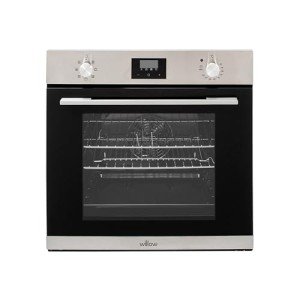A Step-By-Step Guide To Selecting The Right Integrated Cooker And Hob
The Rise of Integrated Cookers and Hobs: A Comprehensive Guide
In the modern-day kitchen, efficiency, style, and area optimization are crucial considerations for property owners and aiming chefs alike. Among the most significant patterns in kitchen style is the increasing appeal of integrated cookers and hobs. These appliances not only improve the cooking experience but also raise the aesthetics of the kitchen space. This article explores the characteristics, advantages, features, and factors to consider surrounding integrated cookers and hobs, supplying readers with an in-depth understanding of their advantages.
What Are Integrated Cookers and Hobs?
Integrated cookers and hobs describe cooking appliances that are built into the kitchen cabinets, supplying a smooth look and making the most of using space. Integrated appliances are developed to blend with the visual of the kitchen instead of standing out like traditional models.
Kinds Of Integrated Cookers and Hobs
Normally, integrated cooking appliances consist of:
- Integrated Hobs: These are cooktops that fit flush into the kitchen counter top. They can be gas, electric, induction, or a combination of these technologies.
- Integrated Ovens: Built straight into the cabinets, integrated ovens can come as single, double, or multifunctional models, using diverse cooking capabilities.
- Mix Units: Some models combine an oven and hob into a single home appliance, offering a compact solution for smaller sized kitchens.
Benefits of Integrated Cookers and Hobs
1. Space Optimization
Integrated cookers and hobs are perfect for little kitchen locations. By embedding the cooking appliances into kitchen cabinetry, homeowners can use their kitchen space more effectively, leaving more room for meal preparation and motion.
2. Visual Appeal
These appliances supply a smooth and modern-day aim to the kitchen. built in double oven and hob packages to choose finishes and incorporate them into the surrounding kitchen cabinetry produces a unified style that enhances the overall appearance of the kitchen.
3. Improved Functionality
Integrated cookers and hobs often include sophisticated technology functions, such as wise controls, timers, and cooking presets, enhancing user experience and enabling efficient cooking.
4. Boosted Safety
Lots of integrated hobs include precaution such as kid locks and automated shut-off functions. This makes them more secure than conventional freestanding models, particularly in homes with children.
5. Increased Resale Value
Modern homes with integrated appliances typically draw in greater resale values. Possible purchasers try to find streamlined styles and modern-day benefits, making integrated cooks and hobs a wise investment.
Functions to Consider When Choosing Integrated Cookers and Hobs
When choosing integrated cookers and hobs, several functions should be taken into account:
1. Cooking Technology
- Induction: Provides quick and effective cooking, easy to tidy, and gives exact temperature control.
- Gas: Offers standard cooking advantages with instantaneous heat however needs sufficient ventilation.
- Electric: Provides constant heat and is available in different designs.
2. Size and Configuration
- Oven Capacity: Should suffice for the household's cooking needs.
- Hob Size: Depending on the number of burners/vessels required for simultaneous cooking.
3. Control Mechanisms
- Touch Controls: Provide a sleek look and ease of cleaning.
- Knob Controls: Offer tactile feedback and are easy to use.
4. Complete and Style
Integrated cookers and hobs can be found in numerous surfaces, consisting of stainless steel, black glass, and even adjustable alternatives to match cabinets.
5. Energy Efficiency
Decide for energy-efficient models that can save money on energy costs and lower ecological impact.
Maintenance and Care
To preserve the efficiency and longevity of integrated cookers and hobs, regular maintenance is key:
- Clean the surfaces: Regularly clean down the hob and oven surface areas to prevent residue build-up.
- Examine seals and gaskets: Ensure that oven seals are undamaged for efficient cooking.
- Service regularly: Schedule professional maintenance to keep the appliances in leading shape.
Frequently asked questions
1. What is the distinction between built-in and integrated cookers?
Response: Built-in cookers are designed to be set up within kitchen cabinets, whereas integrated cookers are created to perfectly mix with the kitchen cabinetry for a more cohesive look.
2. Are integrated appliances more pricey?
Response: Generally, integrated appliances may have a greater in advance cost compared to freestanding systems due to the fact that of their design and the setup requirements. However, they can use long-term cost savings in energy effectiveness.
3. Can I set up integrated cookers and hobs myself?
Response: While some property owners may be able to deal with the installation themselves, hiring an expert is recommended to ensure proper fit and function, especially for gas appliances.
4. Are integrated cookers and hobs easier to clean?
Response: Integrated hobs typically have less crevices, making them easier to clean. However, the specific cleaning requirements will depend on the products utilized in the device.
5. What should I check before buying?
Response: Check the size of your kitchen space, cooking requirements, energy performance scores, and compatibility with existing cabinets.
Integrated cookers and hobs are becoming increasingly favored in contemporary kitchens, integrating functionality with aesthetic appeal. By comprehending their advantages, functions, and maintenance requirements, house owners can make informed decisions when picking the ideal appliances for their cooking spaces. As trends in kitchen design continue to evolve, integrated cooking solutions will likely stay at the leading edge of home innovation, assuring both practicality and design.
